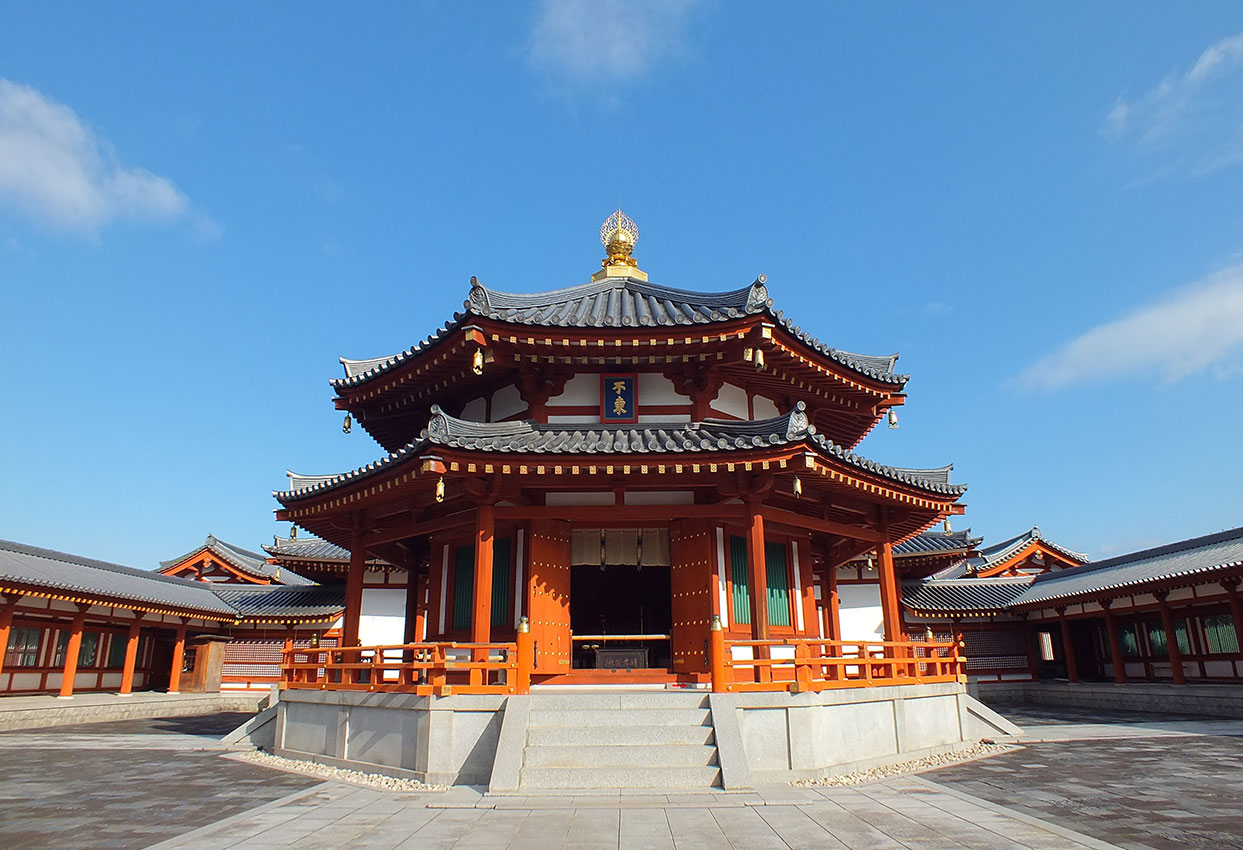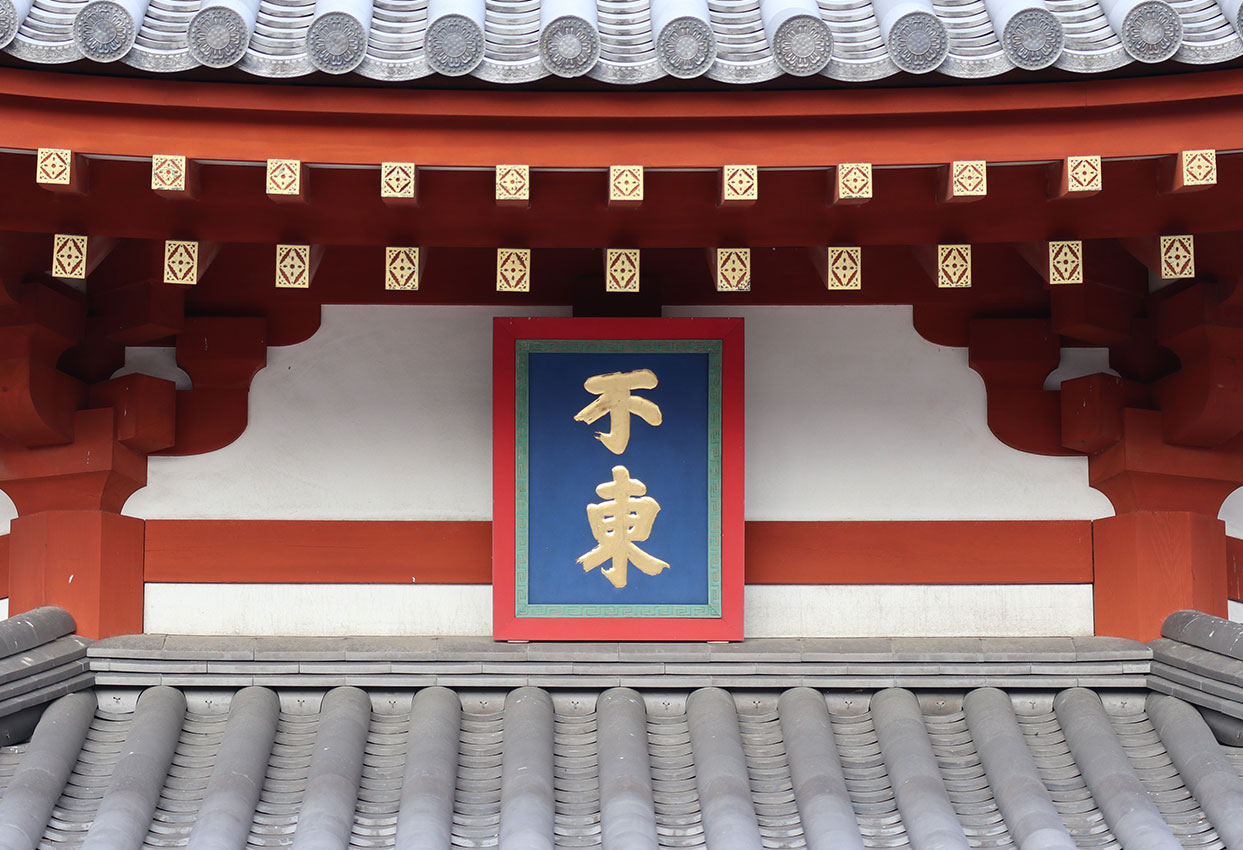16. The Statue of Genjo
The statue of Genjo (Ch. Xuanzang), which is located inside the two-story red and green pagoda within the Genjo Sanzoin Complex, was crafted by Teiichi Okawa, a renowned twentieth-century sculptor of Buddhist images. In his right hand Genjo holds a brush, while in his left he holds a sutra. Clearly, the sculpture was intended as a representation of Genjo working on the translation of Buddhist scriptures after his return to China, following his 17 years of travel and research in India.
Enshrined below the sculpture is a fragment of Genjo’s skull bone, which was brought from China in the 1940s. Originally it was enshrined at a temple in Saitama Prefecture, north of Tokyo, but was later transferred to Yakushiji and placed inside the pagoda in 1991.
The plaque hanging over the front entrance to the pagoda reads futo, meaning “No return to the East.” This is a reference to Genjo’s vow never to return to China until he had secured the sacred scriptures he had set off to find in India; it has become a kind of motto symbolizing his perseverance.
It is said that on many occasions during his travels, Genjo doubted whether he could complete his mission. He often traveled alone and lost his way; but in the process, he came to recognize his own faults and endeavored to correct them. In the end, he succeeded, and his story of perseverance in the face of great adversity is often viewed as emblematic of Buddhist teachings and of the struggles faced by those striving to attain enlightenment.




